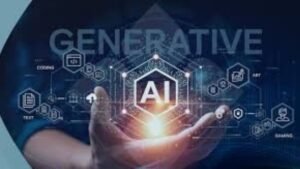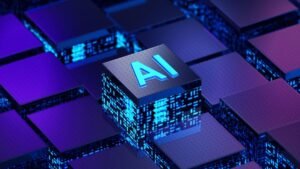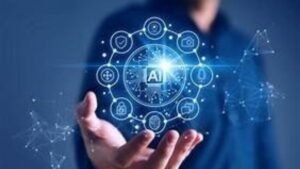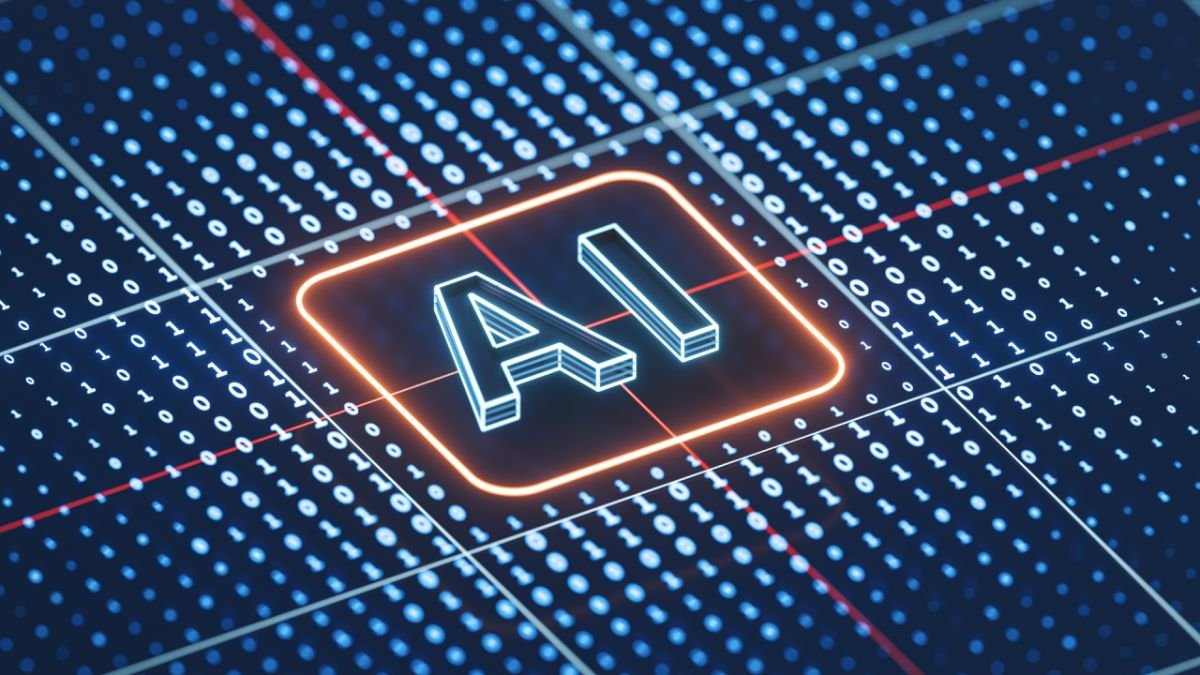Understanding Artificial Intelligence: Navigating the Future with Caution and Curiosity
Artificial intelligence (AI) is a term that has woven itself into the fabric of our daily lives, igniting both fascination and trepidation. Whether in the form of virtual assistants, recommendation algorithms, or autonomous vehicles, AI is reshaping the world as we know it. As we delve into the complexities of this transformative technology, it’s essential to consider its implications, applications, and the challenges it presents.(Toogoodonline)

The Rise of AI: A Market on the Move
The world of artificial intelligence is rapidly expanding. According to forecasts from MarketsandMarkets, the global AI market is expected to surge to an astonishing $1,339 billion by 2030. This growth is driven by technological advancements and increased investment across sectors, from healthcare and finance to retail and entertainment.
However, as AI technologies proliferate, they raise significant concerns, particularly regarding job security. A survey conducted by Forbes revealed that 77% of participants expressed apprehension about AI’s potential to displace jobs. While this concern is legitimate, it’s essential to explore the broader context of AI’s impact on the workforce.
The Double-Edged Sword of Automation
The advent of AI presents a paradox: while it may automate certain tasks, it also creates opportunities for innovation and new job roles. According to Manasi Vartak, chief AI architect at Cloudera, the fear of job loss should not overshadow the potential benefits of embracing AI technologies.
Vartak emphasizes that workers who adapt to new tools and technologies will likely find themselves in a better position. Those who are willing to learn and evolve will remain relevant in the changing job landscape, she explains. This adaptability is crucial as we transition into an era where collaboration with AI becomes a norm.
Demystifying Generative AI
Among the various branches of AI, generative AI stands out as a particularly intriguing domain. Generative AI refers to systems capable of creating new content, ranging from text and images to music and video. This technology has gained immense popularity in recent years, particularly for its ability to transform creative processes.
Joe Edwards, director of product marketing at UiPath, describes generative AI as a tool that facilitates creativity. It can take a few prompts and generate entirely new content, opening up exciting possibilities for creators in all fields, he notes. This technology empowers artists, writers, and marketers alike to push the boundaries of their creativity.
How Generative AI Works
At its core, generative AI relies on advanced algorithms that analyze vast datasets to learn patterns and structures. These models are trained on diverse inputs, allowing them to generate coherent and contextually relevant outputs based on the prompts they receive.
For example, when a user inputs a question or a command, the AI utilizes its training to generate a response that aligns with the given context. This capability marks a significant evolution from earlier AI systems, which primarily focused on predictive tasks—analyzing data to forecast outcomes or categorize information.
Vartak explains, In the past, AI was mainly predictive, determining whether a piece of content was positive or negative. Now, we can create original articles, stories, and even poems from scratch. This shift is what makes generative AI so fascinating.

Exploring the Applications of Generative AI
In creative fields, writers can use AI to draft articles, brainstorm ideas, or even create fictional narratives. Musicians can experiment with AI-generated compositions, leading to unique soundscapes and innovative musical styles.
In marketing, companies harness generative AI to develop personalized advertisements and content tailored to specific audiences. This technology can analyze consumer behavior and preferences to generate highly relevant and engaging marketing materials.
Moreover, generative AI plays a significant role in education. Students can utilize AI tools to enhance their research capabilities, generate essays, or even practice language skills. By providing immediate feedback and resources, generative AI can enhance the learning experience.
The Challenges of Generative AI
Despite its impressive capabilities, generative AI is not without its pitfalls. One notable concern is the phenomenon of hallucination, where AI produces incorrect or nonsensical information. For instance, if a user asks an AI model a seemingly simple question—like the number of ‘r’s in the word strawberry the response may be inaccurate or misleading.
Edwards warns, AI can sound very confident while delivering false information. It’s crucial for users to approach AI-generated content with a critical mindset. This underscores the importance of verification and cross-referencing information when utilizing AI-generated outputs.
The Dangers of Misinformation
The potential for misinformation is a pressing issue in the age of AI. Rapidly shared on social media platforms, AI-generated content can easily spread misleading information. Some outputs may be harmless or even humorous, but others can contribute to the proliferation of harmful myths and false narratives.
A striking example occurred earlier this year when a viral AI-generated statement erroneously claimed, Doctors recommend smoking 2-3 cigarettes per day during pregnancy. Such misinformation can have real-world consequences and highlights the necessity for caution when interacting with AI-generated content.(Toogoodonline)

Addressing Bias in AI
Another critical challenge in the realm of AI is the potential for bias. Generative AI systems are trained on data that reflects societal norms and biases, which can inadvertently perpetuate stereotypes. For example, AI-generated images may reinforce harmful racial or gender stereotypes, further entrenching existing inequalities.
Vartak emphasizes the importance of recognizing these biases. These models are trained on data that is often biased. If we don’t critically assess the content produced by AI, we risk perpetuating those biases, she states. To mitigate this issue, developers and organizations must prioritize fairness and representation in their AI training datasets.
Strategies Use of Generative AI
To harness the full potential of generative AI while minimizing risks, users should adopt a mindful approach. Vartak recommends maintaining human oversight in the creative process. Think of generative AI as your creative partner, not the sole creator, she advises.
By providing clear prompts and guidance, users can leverage AI tools to generate content that aligns with their vision while ensuring that the final output meets quality standards. This collaborative approach fosters creativity while preserving accountability.
Practical Applications in Various Industries
Generative AI finds utility across numerous sectors. In education, for example, teachers can integrate AI tools into their curricula to enhance student engagement and foster critical thinking. By providing resources and assistance, AI can help students develop essential skills while promoting academic integrity.
In the healthcare industry, AI systems are being utilized to improve patient care. Some doctors leverage generative AI to streamline documentation processes and create accessible explanations of medical terminology for patients. Additionally, AI models can assist in diagnosing conditions such as breast cancer and pulmonary embolism, potentially leading to earlier interventions and improved patient outcomes.
Businesses are also increasingly recognizing the value of generative AI. Companies like Cloudera and UiPath are developing customized AI solutions tailored to their specific needs. By training private AI systems on smaller datasets, organizations can minimize risks associated with data privacy and ensure compliance with ethical standards.
The Future Workforce: Adapting to Change
As AI technologies progress, their influence on the job market will be significant. Although certain conventional roles may be replaced by automation, this shift will also create new positions that demand a combination of human creativity and technical skills. Those who can successfully work alongside AI tools will find themselves at a distinct advantage in this changing environment.
Organizations have a crucial role to play in preparing their workforce for an AI-driven future. Investing in training and reskilling programs can empower employees to embrace technology rather than fear it. By fostering a culture of continuous learning and adaptability, companies can equip their teams to thrive in an era of rapid technological change.
Encouraging Exploration and Engagement with AI
Both Vartak and Edwards encourage individuals to explore generative AI tools and resources. Engaging with these technologies can be as simple as experimenting with free online platforms like ChatGPT. View generative AI as a supportive tool, Vartak suggests. It can help you enhance your creativity and productivity in your daily life. While new technology can be daunting, generative AI offers incredible opportunities for growth and exploration.

Ethical Considerations in AI Development
As we navigate the complexities of AI, ethical considerations must remain paramount. The development and deployment of AI technologies should prioritize transparency, fairness, and accountability. Stakeholders—including developers, businesses, and policymakers—must collaborate to establish guidelines that promote ethical AI practices.
By fostering a culture of responsibility in AI development, we can address the risks of misinformation and bias while harnessing the transformative potential of this technology. This collective effort will ensure that AI serves as a tool for progress rather than a source of division.(Toogoodonline)
Conclusion: Embracing a Thoughtful Future with AI
Artificial intelligence is a transformative tool that can foster innovation and enhance our daily lives. Nevertheless, it also brings forth challenges that require careful consideration. By recognizing the advantages and limitations of generative AI, we can tap into its creative and productive potential while staying alert to its associated risks.
As we move forward into an AI-driven future, it’s essential to approach this technology with a balanced perspective. By fostering adaptability and critical thinking, we can navigate the evolving landscape of artificial intelligence and shape a future that benefits all.
Platforms like USA TODAY are committed to exploring the questions that arise in our rapidly changing world. From examining the intricacies of AI to understanding its broader implications, we strive to empower readers with the knowledge they need to navigate this new frontier.
As we embrace the potential of AI, let us do so with curiosity, caution, and a commitment to ethical principles. The future is bright for those willing to engage with this technology thoughtfully, paving the way for a more inclusive and innovative tomorrow.
FAQs
Q1. What is artificial intelligence (AI)?
Ans: Artificial intelligence refers to the simulation of human intelligence processes by machines, particularly computer systems. This includes learning, reasoning, and self-correction.
Q2. What is generative AI?
Ans: Generative AI is a subset of AI that can create new content, such as text, images, music, and videos, based on input prompts. It utilizes patterns learned from large datasets to produce original outputs.
Q3. How is generative AI impacting the job market?
Ans: While generative AI may automate some traditional jobs, it also creates new opportunities that require a blend of human creativity and technical skills. Workers who adapt to using AI tools are likely to be more successful.
Q4. What are some strengths of generative AI?
Ans: Generative AI excels at producing written content, brainstorming ideas, summarizing information, and automating repetitive tasks, making it a valuable tool in various fields.
Q5. What are the potential risks of using generative AI?
Ans: Risks include the generation of incorrect or misleading information (known as hallucination), perpetuation of biases present in training data, and the potential for spreading misinformation.
Q6. How can I ensure the accuracy of AI-generated content?
Ans: Always review and edit AI-generated outputs. Use detailed prompts and maintain human oversight to verify accuracy and relevance.
Q7. What should I consider when using generative AI for creative work?
Ans: Set clear objectives, provide specific prompts, iterate on outputs, and collaborate with AI as a partner rather than a replacement for human creativity.
Q8. How can organizations responsibly implement generative AI?
Ans: Organizations should prioritize transparency about the use of AI, ensure ethical practices, and provide training for employees to effectively integrate AI into their workflows.
Q9. What role does bias play in generative AI?
Ans: AI models can reflect biases from their training data, leading to potentially harmful outputs. It’s important to recognize and address these biases to promote fairness and representation.
Q10. How can individuals stay updated on developments in AI?
Ans: Engaging with industry news, attending workshops, participating in online communities, and exploring new tools can help individuals stay informed about the latest advancements in AI technology.
Thanks for reading
Have you enjoyed this article? Spread the word! We’re eager to hear your comments on future mobile topics!
Chappell Roan: Rising Star Calls Out Photographer for Disrespect

1 thought on “Generative AI: Your New Creative Partner!”